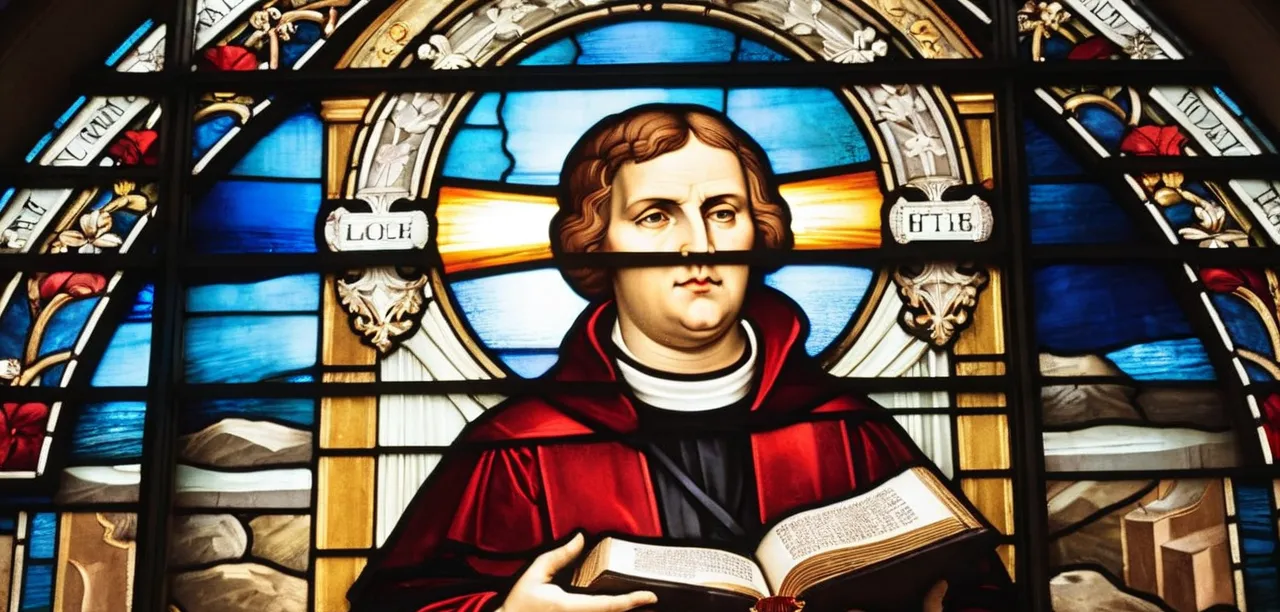What Is Lutheran Christianity?
Christianity has many different denominations and traditions that have developed over the centuries. Lutheranism is one of the major branches of Protestant Christianity that traces its roots back to the German reformer Martin Luther.
If you’re short on time, here’s a quick answer to your question: Lutheran Christianity is a Protestant Christian tradition based on the teachings of Martin Luther and his 16th century Reformation. Lutherans uphold the Bible and teachings like salvation by faith alone as central.
In this comprehensive guide, we will explore the key beliefs, history, practices, and demographics of Lutheran Christianity to help you understand this tradition.
Origins and History
Martin Luther and the 95 Theses
Lutheran Christianity traces its origins to the German friar and professor of theology Martin Luther (1483–1546). On October 31, 1517, Luther nailed his 95 Theses to the door of the Castle Church in Wittenberg, Germany.
This document outlined Luther’s grievances with the Roman Catholic Church, particularly regarding the selling of indulgences and the Church’s extensive power and wealth.
Luther’s brazen act sparked the Protestant Reformation as it led to widespread public debate over the practices of the Catholic Church. While Luther intended to spur reforms within Catholicism, his revolutionary ideas like justification by faith alone led to a schism in Western Christianity.
The Spread of Lutheranism
In 1521, Luther was excommunicated by Pope Leo X and declared an outlaw by Holy Roman Emperor Charles V. But Luther’s teachings continued gaining traction in German states and Scandinavia.
Key factors driving Lutheranism’s rapid spread included increased availability of printed Bibles and catechisms in local languages and growing nationalist sentiment among Northern European nobility and peasants.
By the late 1500s, advancements in transportation and communication had fueled the geographic expansion of multiple Lutheran movements.
Main Lutheran Groups and Denominations
Today there are around 80 million Lutherans worldwide, making Lutheranism one of the largest branches of Protestant Christianity. Most Lutherans belong to churches that emerged during the 16th century Reformation or in the following centuries.
Major groupings include:
- Churches directly tied to Luther such as the Evangelical Lutheran Church in America (ELCA) – about 3.3 million members attending nearly 10,000 congregations in the U.S. (elca.org)
- Nordic Lutheran churches like the Church of Sweden which claims 6 million members (svenskakyrkan.se)
- Confessional Lutheran groups including the second largest Lutheran denomination: the Lutheran Church-Missouri Synod – 2.1 million members and 6000+ congregations mostly in North America (lcms.org)
Core Beliefs and Doctrines
Authority of Scripture Alone
Lutherans believe the Bible is the final authority for faith and life. They teach that the Bible is God’s inerrant and infallible Word, fully inspired by the Holy Spirit. Some key Bible passages that support this doctrine include 2 Timothy 3:16-17 and 2 Peter 1:20-21.
Salvation by Grace Through Faith
Lutherans believe that we are saved by God’s grace alone, through faith alone, because of Christ alone. Good works cannot earn salvation, but are the fruits of faith. Ephesians 2:8-9 is a go-to verse for Lutherans on this doctrine.
Surveys show over 90% of Lutherans affirm this classic Protestant teaching (see Pew Research Center).
Sacraments
The two sacraments practiced in Lutheranism are baptism and the Lord’s Supper (Eucharist, Communion). Lutherans believe these sacraments were instituted by Christ and offer God’s grace to those who receive them in faith.
Some key “sacrament verses” cited are Matthew 26:26-28 on the Lord’s Supper and Romans 6:3-4 on baptism.
Law and Gospel
Worship and Practices
Church Services and Liturgy
Lutheran church services focus on the proclamation of the word of God and the celebration of the sacraments. The liturgy varies across different Lutheran denominations but often contains common elements rooted in the historic church, like corporate confession and absolution of sins.
Many Lutheran churches utilize a liturgical calendar, vestments, and set liturgies for their Sunday services.
Music and Hymns
Music plays a vital role in Lutheran worship. Luther himself emphasized the importance of congregational singing. Many Lutheran hymns come from the rich musical heritage of composers like Bach. Popular hymns include “A Mighty Fortress is Our God,” “How Great Thou Art,” and “Amazing Grace.”
Lutheran hymnals like the Lutheran Book of Worship and Evangelical Lutheran Worship contain hundreds of hymns old and new.
Sacraments and Rites
Lutherans recognize two sacraments instituted by Christ: Baptism and Holy Communion. Lutherans baptize infants as well as believing adults. Holy Communion is offered regularly and is open to baptized believers who confess unity with Lutheran beliefs.
Other rites include confirmation, weddings, ordinations, and funerals rooted in Scripture and traditional orders.
Church Year and Calendar
Many Lutheran churches structure their worship services around the seasons of the Church Year. Starting with Advent and Christmas, the calendar moves to Epiphany, Lent, Holy Week, Easter, Pentecost, and then an extended Pentecost season.
Occasional services may include Ash Wednesday, Maundy Thursday, Good Friday, Easter Sunrise, and Ascension services. This liturgical calendar keeps the life of Christ central throughout the year.
Demographics and Global Reach
Membership Statistics
As of 2021, there were approximately 67.2 million Lutherans worldwide, making Lutheranism the second largest Protestant denomination behind Anglicanism. The Lutheran World Federation estimates that there are around 74.2 million adherents belonging to member churches.
The largest national Lutheran denomination is the Evangelical Church of Germany, with 20.9 million members. Other prominent Lutheran bodies include the Ethiopian Evangelical Church Mekane Yesus and the Evangelical Lutheran Church in Tanzania, each with over 6 million members.
Lutheranism has seen declines in some parts of the developed world, including Europe and North America. However, it has seen rapid growth in developing countries, particularly in Africa. For example, the Ethiopian Evangelical Church Mekane Yesus has grown from about 100,000 members in 1959 to over 7 million today.
This growth demonstrates Lutheranism’s continuing global reach and appeal.
Prominent Regions
While there are Lutherans worldwide, the regions with the highest concentrations are Europe, especially Northern Europe and Scandinavia, and Africa. Germany has the most Lutherans by far with over 20 million.
Other European countries like Norway, Denmark, Finland, Sweden, Iceland, Estonia, Latvia and Lithuania have Lutheran majorities or pluralities. This reflects Lutheranism’s origins in the German lands of the 1500s.
In Africa, Ethiopia, Tanzania, Madagascar, Namibia and Malawi have millions of Lutherans each. Rapid growth has occurred in the last century due to missionary activity. There are also Lutherans in South Africa, Nigeria, Zambia, Zimbabwe and other countries.
The Ethiopian Evangelical Church Mekane Yesus is one of the fastest growing Lutheran churches.
Outside of Europe and Africa, Lutherans can be found in North America, Latin America, and Asia, though usually as smaller minorities. For example, there are around 4 million Lutherans in the United States and over 500,000 in Canada.
Brazil, Chile, Argentina and Peru have growing Lutheran populations as well.
Ecumenical Relations
Lutherans have been actively involved in the ecumenical movement since the movement’s beginning in the early 20th century. This reflects a desire for greater Christian unity, which was important to Luther himself.
The Lutheran World Federation is a founding member of the World Council of Churches, demonstrating this commitment.
Lutherans have engaged in dialogue with other Christian traditions like Anglicanism, Methodism and Reformed/Calvinist churches. For example, in 1999 the Evangelical Lutheran Church in America signed an agreement of “full communion” with some Reformed, Methodist and United churches.
This means they recognize each other’s ministries and allow for interchangeability of clergy.
Relationships with the Roman Catholic church have significantly improved after centuries of conflict following the Reformation. A landmark moment was the Joint Declaration on the Doctrine of Justification signed by the Lutheran World Federation and the Catholic Church in 1999.
While differences remain, this signaled a new era of mutual understanding and respect.
Conclusion
In conclusion, Lutheran Christianity is a major Protestant tradition stemming from Martin Luther’s 16th century Reformation. Core Lutheran beliefs include salvation by grace alone through faith, authority of the Bible, and the priesthood of all believers.
Lutheran worship is centered around liturgy, preaching, and hymns, with sacraments like baptism and Eucharist. Today, there are about 80 million Lutherans globally, especially concentrated in Germany and Scandinavia.
Lutheranism continues to have significant influence on wider Protestant Christianity.







